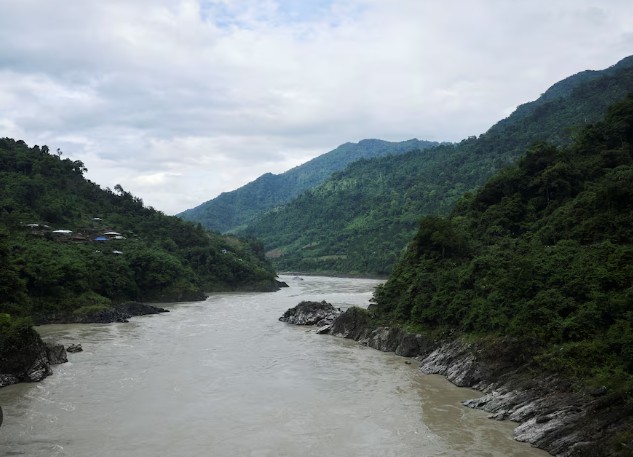India Raises Alarm Over Chinese Mega-Dam Plans in Tibet

India is expressing growing alarm over China’s planned construction of a massive hydroelectric dam on the Yarlung Tsangpo River in Tibet, fearing it could slash downstream water flows by as much as 85% during the dry season. According to a confidential government analysis and confirmed by four sources familiar with the matter, the Chinese project poses a direct threat to water security in India’s northeastern region and beyond.
The Yarlung Tsangpo becomes the Brahmaputra River as it enters India through Arunachal Pradesh, flowing into Assam and eventually Bangladesh sustaining the livelihoods of more than 100 million people across three countries.
In response, India is now fast tracking its long delayed plan to construct its own major dam in Arunachal Pradesh to manage and store water flows before they reach the plains. The urgency marks a significant escalation in the region’s long-standing hydro-political tensions.
A Race to Control Asia’s Lifeline
China announced in 2020 that it would build a “super dam” near the Great Bend of the Yarlung Tsangpo close to the Indian border capable of generating three times the output of the Three Gorges Dam, currently the world’s largest.
Indian officials fear that China could use the dam to divert or restrict water during critical periods, despite assurances from Beijing that the project will not harm downstream nations. India has not been granted full access to China’s hydrological data, especially during times of natural disaster or high tension a key source of distrust.
“This is not just an environmental issue; it is a matter of national security,” said a senior Indian water ministry official, speaking on condition of anonymity. “We cannot leave our northeastern states vulnerable.”
Local Resistance Complicates India’s Response
India’s counter dam project, originally proposed in the early 2000s, has remained largely on paper due to fierce opposition from local communities in Arunachal Pradesh. Residents fear their villages will be submerged, ancestral lands lost, and traditional lifestyles upended.
Protests have occasionally turned violent, stalling environmental clearances and delaying central approval. Indigenous groups argue that they are being asked to pay the price for decisions made in distant capitals, without adequate consultation or compensation.
“Every time Delhi talks about building a dam here, it feels like they’re preparing to drown us,” said Tashi Dorjee, a local activist in Upper Siang district.
Strategic and Environmental Stakes
The Brahmaputra is not only a vital water source, but also holds massive hydroelectric potential. Yet experts warn that an infrastructure arms race in a seismically active and ecologically fragile region could lead to unintended consequences.
Environmental scientists have long cautioned that both India and China risk triggering irreversible damage by altering the river’s natural flow. The Eastern Himalayas are prone to landslides, earthquakes, and glacial lake outbursts any of which could be worsened by large scale damming.
“This is a classic example of transboundary water conflict one where downstream communities have little control, but bear the greatest risk,” said Dr. Meera Srinivasan, a South Asia water expert at the Centre for Policy Research.
The Geopolitical Undercurrent
The controversy adds a new layer to India-China border tensions, particularly in Arunachal Pradesh, which China claims as part of “South Tibet.” With no formal water-sharing treaty between the two nuclear-armed neighbors, the current standoff is further complicating already fraught relations.
India has recently revived talks on a broader regional water framework with Bangladesh and Bhutan, aiming to build a collective strategy to counter upstream risks.
What’s Next?
While India moves ahead with feasibility and design work for the Arunachal dam, officials admit that construction will depend on balancing national security priorities with environmental concerns and local rights.
“This is not just a bilateral issue anymore,” said one Indian diplomat. “It is about the future of water in Asia.”
